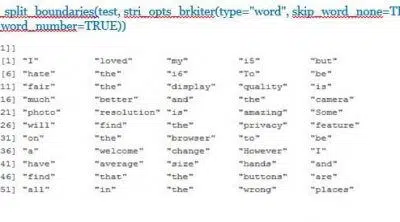5 Tips To Make The Most Of Your SAS Training

You have signed up to learn SAS, and are excited at the prospect of mastering one of the most commonly used statistical analysis software tools. You are looking forward to learning how to tackle those massive datasets or to creating sophisticated statistical models. As you get ready for some serious learning, here are 5 tips to make the most of your training experience:
1. Learning Curve! : Be prepared for a somewhat steep learning curve. If you are new to programming, or haven’t used any other statistical tools, then you may have a couple of frustrating days or weeks as you get used to a strange new system and a strange language and syntax. While the SAS language is relatively “English like”, it will still take some time to get used to its specific syntax and peculiarities, and concepts specific to SAS like libraries, procedures, and Program Data Vectors. Don’t lose faith – you will soon be able to speak the language with confidence, but most of us will need to go through the “I have written the code exactly how I was trained but it does not work at all” stage!
2.Free Resources: There are a humungous variety of resources available on the net related to the SAS language, from basic manuals of syntax and options from the support.sas.com site, to very specific code examples for any type of data manipulation or visualization scenario that you could imagine. Some particularly useful sites include:
Support.sas.com
SUGI papers: https://www.sas.com/en_in/training/overview.html
UCLA site: https://www.ats.ucla.edu/stat/sas/
3.Practice: There really is no substitute for actual practice. We could infact re-do this article with the top 5 tips being: Practice, Practice, Practice… you get the idea. Unless you get hands on with the codes and continue that for as many hours as it takes to get comfortable, you will not gain confidence to work with SAS.
4.Focus more on the idea, and not so much on the syntax: One of the common mistakes I see as a trainer is the tendency of the participants to be very focused on code examples, with the result that they know how to generate SAS code for exactly the same situation example used in the training, but are unable to process if the question is even slightly different from what was covered in the training. While it is of course very important to know how to get SAS to execute and generate the output you want, which means you need to know the syntax, it is more important to get a general sense of how SAS manipulates data and generates results. The syntax for most procedures or functions is set up similarly, and once you understand the actual processing, looking up exact syntax is relatively easy across all the different resources available. It is more important to understand which procedure or function to use in a particular situation, and how it actually works, rather than spending all your energy in memorizing the exact syntax.
5.Take small bites: As you spend more time on SAS, you will realize that there are many ways of achieving the same results in SAS, differing in complexity, processing speed, and other considerations. It is ok to start with simple to use methods that may not be the most efficient, and then move on to more sophisticated methods. Build expertise slowly, but be very sure of the basics!
Nothing is as effective as hands on practice. There may be some frustrating moments in the beginning as you may struggle with an unfamiliar language, but once you achieve a basic level of proficiency, you will enjoy learning more about what you can do with the SAS language!







